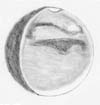
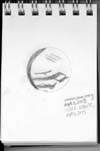
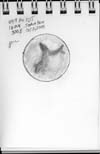
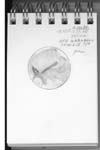
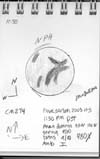
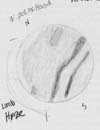
At 2005 closest approach, on the night of October 29/30 this year, Mars was 69 million km (43 million miles) from Earth compared to 57 million km (34 million miles) from Earth in 2003. That is still very very close. An added bonus is that Mars will be 30 or more degrees higher in the sky for mid-northern latitude observers this year. This means that the observing conditions could be superior to 2003. 2005 also offers the most favorable period for telescopic viewing of Mars until 2020. So ladies and gentleman, rev up your observing instruments. Red planet viewing is in full swing!
Telescope size isn't everything when it comes to observing Mars.
Atmospheric turbulence is one of the two even more important factors for observers. An object must be at least 30 degrees above the horizon for moderately steady seeing. Overhead is 90 degrees above the horizon, so most amateur astronomers will always wait until Mars is halfway between horizon and overhead for a serious look, image or sketch of Mars. You should too. From late September through early December 2005 Mars will be 60 or 70 degrees above the horizon when at the meridian. The meridian is the line passing over your head from the north to the south celestial pole. This is when an object, such as Mars, is best placed for viewing, or in my case for sketching. If this helps, the sun is on the meridian at mid-day. In 2003, Mars hovered low in the haze of 30 degrees above the horizon at its closest approach in late August.
The second important factor that affects observing is the atmospheric turbulence....on Mars! We have seen some dust clouds near the end of October 2005, but unlike 2001, they haven't obscured too much of Mars, in fact they are fascinating to observe!
Thanks to Geoff Gaherty of Toronto's RASC, and to the RASC Observers Handbook 2005 for this information about Mars 2005. This is a book worth having. I have one at home and another at work!